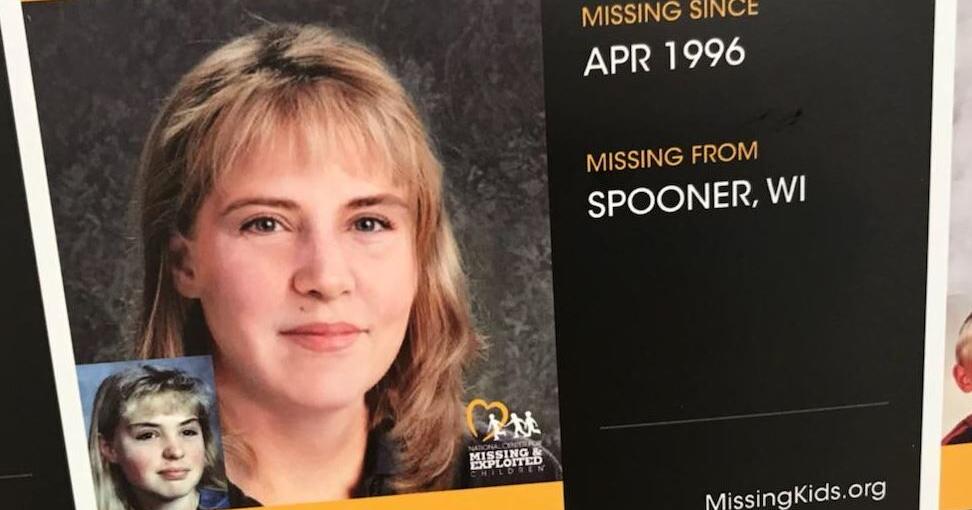http://www2.jsonline.com/news/state/...s21072001a.asp
Urgency goes missing in missing-persons cases
Attention given to cases contrasts with that for Levy, relatives say
By MARK JOHNSON and JAMES H. BURNETT III
of the Journal Sentinel staff
Last Updated: July 20, 2001
Five years have passed since Michael Bushland's daughter, Sara, 15, stepped off a school bus near her mother's home in Spooner and vanished.
Missing-person reports recorded in the FBI National Crime Information Center. The number does not account for cases that were closed. No breakdowns are available for adults vs. children.
2001: 428,228 (through June 30)
2000: 876,213
1999: 867,129
1998: 932,190
1997: 980,712 (a record)
Source: Associated Press
Quotable
The worst part is the not
knowing.
- Dawn Bushland,
stepmother of missing girl
But Sara Bushland dropped from sight in a way that Washington intern Chandra Levy did not. Bushland's blond, blue-eyed visage didn't land on front pages or television screens coast to coast. Law enforcement at first considered her a runaway. She was missing, but so was the sense of urgency about her case.
"Of course, we contacted 'America's Most Wanted,' " but the case "is too cold," says Dawn Bushland, Michael Bushland's wife and the girl's stepmother. "There's not enough pizzazz."
Meanwhile, every Father's Day, Michael Bushland prays that his daughter will call.
Missing-persons cases are surprisingly common. Cases such as that of Levy's are much rarer.
This year in Milwaukee, about 2,000 children and adults have been reported missing, and all but 200 or so of those cases have been resolved, police say.
"There are several people reported each day. Most of them are children, and most are found within hours," says Lt. Daniel Ruzinski, a veteran sensitive-crimes detective. "The majority of them, probably 75 percent, are found within a day."
An average of 700 to 800 children are reported missing each month in Wisconsin, state records show.
The majority of those reported missing are found or return home on their own within hours or days, says Randy Romanski, a spokesman and policy analyst in Attorney General Jim Doyle's office.
"On average, about 95 percent of children reported missing are located" in less than two days, he says. "Typically they would be runaways, children told to leave the home - say, during an argument - and then came back or were located. However, there are some that are longer-term cases or more serious."
The children's edge
In this respect, cases such as Bushland's are usually more promising than those such as Levy's. Children are more likely than adults to be reported as missing very quickly. Fewer people report adult friends and relatives as missing, even after extended absences, Ruzinski says.
"Everybody's got a relative you haven't seen for a couple of months, right? Do you report them missing?" he says. "It's not unusual not to hear from cousin so-and-so for two or three months at a time, and all of a sudden he'll give you a call. So I think it's basically because adults can come and go as they please, where children, their parents are responsible for them."
Once adults are reported missing, some factors make them easier to track down. An adult's employment records, travel arrangements and credit cards leave a paper trail.
Still, there are resources for missing children that don't exist for missing adults.
Most government and private missing-persons tracking organizations concentrate on children, Romanski says. In Wisconsin, Doyle's office oversees the Wisconsin Clearinghouse for Missing and Exploited Children, a conduit organization for coordinating statewide search efforts.
In the Bushland case, a mix-up kept her name and photo off the national database of missing and exploited children about three years. Fliers and posters were distributed locally, but they produced few leads.
Dawn Bushland wishes she and others had contacted the National Center for Missing and Exploited Children immediately, instead of assuming that law enforcement would do so.
"Everyone failed Sara, and I include myself," she said.
It has been hard for her to watch the relentless focus on the Levy case in Washington. "America's Most Wanted" wasn't the only television show she tried. There were calls and e-mails to Sally Jessy Raphael, Montel Williams and Maury Povich, without success.
In Levy's case, the coverage has been so intense that there were even stories about the one network, CBS, that wasn't reporting the case.
"Makes me sick," Dawn Bushland says of the attention on Levy and U.S. Rep. Gary Condit (D-Calif.), who has admitted having an affair with the intern. "Sara didn't have an affair with a congressman. Mike and I are nobodies."
Planned a memorial
A year ago, Michael Bushland was thinking about holding a memorial service for his daughter, whose 21st birthday would be Aug. 15.
"He believes, at least if he felt he needed to talk with Sara, he could go to the cemetery," Dawn Bushland says. "I said, 'You need to have a true confirmation.' The worst part is the not knowing."
They held off on the memorial service.
Other families of missing children face a different kind of uncertainty.
Gail Boyden is the grandmother of Shawna Elizabeth Nowaczyk, 5, who went missing from her Eagle home in October. Boyden says she believes Shawna is with her mother, possibly in Guatemala.
"She's got family she knows" in Guatemala, Boyden says. "We know she took American Airlines from O'Hare."
Shawna's parents, Joseph and Mauren Nowaczyk, were going through a divorce when the mother and daughter disappeared, Boyden says. Authorities have been able to do little to locate Shawna, and if she is with her mother in Guatemala, Boyden believes she will be tough to bring home.
"You can't touch them down there," she says.
Boyden says the girl's disappearance has been hard on Joseph Nowaczyk, even though he has reason to believe that his daughter is still alive.
"It's been terrible on him," she says. "It seems the longer it goes on, the more difficult it gets."
She has no difficulty with the publicity surrounding Levy. She feels there is a different irony in her granddaughter's case.
"They made a big deal about Elian Gonzalez," she says. "He wasn't even a citizen of the U.S. Here we have a citizen of the U.S., and they won't do a damn thing."
Perhaps the closest Wisconsin has come to the media frenzy of the Levy case was the reaction to the disappearance of Laurie Depies, 20, in August 1992 from a parking lot outside her boyfriend's apartment in Menasha. She apparently set a soft-drink cup on her car while she locked it, then disappeared.
"There was a great amount of attention. It was quite unbelievable," says her father, Mark Depies, 56. "There were about 400,000 posters put out with her picture. People came back and said, 'I saw Laurie's picture at a gas station in Canada.' "
Within 12 hours or so of the disappearance, Mark Depies and his ex-wife saw the first television cameras covering the case.
Friends and relatives manned a search center for Laurie Depies in a Menasha office building. Psychics approached the family, which heard from about 20 in all. By the fall, the family had appeared on the Oprah Winfrey show to talk about the case.
Sense of urgency waned
But the urgent hope felt early in the case began to drain as time went on. The first psychics had said things such as "Hurry, hurry. She's still alive. They're hurting her," Mark Depies recalls. After six weeks, the messages from psychics revolved around where police could find her body.
The search center, which had been manned 24 hours a day for a while, began using an answering machine. It closed around Christmas in 1992, passing all its information on to police.
"The media hung with us for a long time," Mark Depies says.
There were stories at the one-year anniversary. More stories at two years.
"The fifth anniversary, they just mentioned," he says.
He found dealing with the media difficult. Even now, talking about his daughter brings back pain. He says his heart goes out to Levy's family and other families of missing persons.
Mark Depies says he almost prefers not to know what happened to his daughter "because I'm afraid of what the answer is." Still, part of him can't surrender the last slim hope.
He says he has about a 2% hope that she is still alive. "My mind says that she's no longer with us, but you always have a little hope," he says.
Appeared in the Milwaukee Journal Sentinel on July 21, 2001.



 www.crimewatchers.net
www.crimewatchers.net











